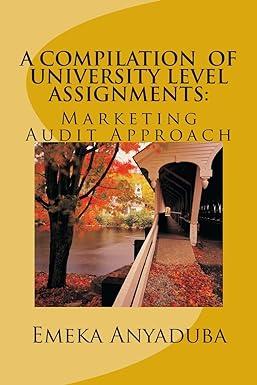Question
The fact that generally accepted accounting principles allow companies flexibility in choosing between certain allocation methods can make it difficult for a financial analyst to
| The fact that generally accepted accounting principles allow companies flexibility in choosing between certain allocation methods can make it difficult for a financial analyst to compare periodic performance from firm to firm. |
| Suppose you were a financial analyst trying to compare the performance of two companies. Company A uses the double-declining-balance depreciation method. Company B uses the straight-line method. You have the following information taken from the 12/31/16 year-end financial statements for Company B: |
| Income Statement | |||
| Depreciation expense | $ | 12,000 | |
| Balance Sheet | |||
| Assets: | |||
| Plant and equipment, at cost | $ | 240,000 | |
| Less: Accumulated depreciation | (48,000 | ) | |
| Net | $ | 192,000 | |
| You also determine that all of the assets constituting the plant and equipment of Company B were acquired at the same time, and that all of the $240,000 represents depreciable assets. Also, all of the depreciable assets have the same useful life and residual values are zero. |
| Required: |
| 1. | In order to compare performance with Company A, estimate what B's depreciation expense would have been for 2016 if the double-declining-balance depreciation method had been used by Company B since acquisition of the depreciable assets. | ||
| Double-declining balance year 1 (2013) : year 2 (2014) : year 3 (2015) : year 4 (2016) :
|
Record the depreciation expense for 2016:
Step by Step Solution
There are 3 Steps involved in it
Step: 1

Get Instant Access to Expert-Tailored Solutions
See step-by-step solutions with expert insights and AI powered tools for academic success
Step: 2

Step: 3

Ace Your Homework with AI
Get the answers you need in no time with our AI-driven, step-by-step assistance
Get Started


